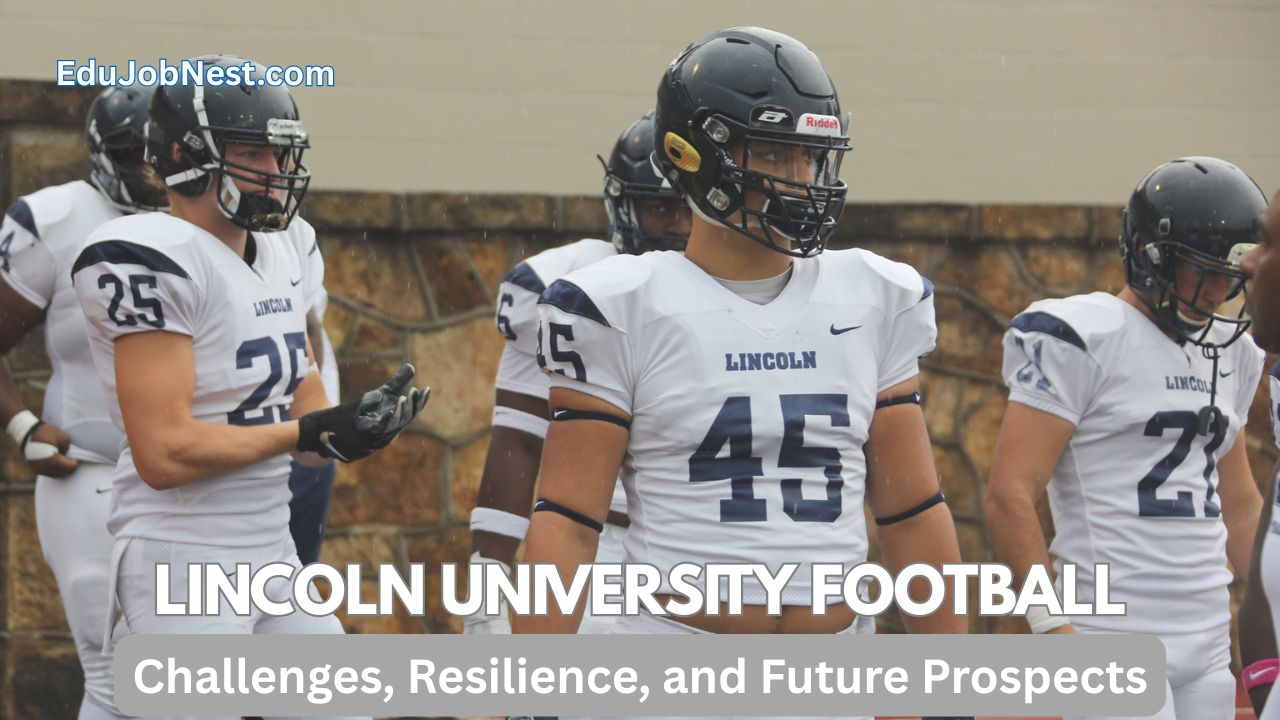
Introduction to Lincoln University Football
Lincoln University, a historic institution with deep roots as an HBCU in Missouri and a business-focused school in Oakland, California, has garnered attention for its football programs. However, the keyword “Lincoln University football” often brings up discussions about the Oakland-based Lincoln University Oaklanders, a non-NCAA program facing significant scrutiny.
This blog dives into the challenges, controversies, and potential future of Lincoln University football, particularly focusing on the Oaklanders, while also touching on the Missouri program’s legacy. Whether you’re a college football enthusiast or curious about the state of smaller programs, this article explores the complexities of Lincoln University football and its place in the broader sports landscape.
Also Read: Yeshiva University vs Lehman College: Which Is Better for You?
The Oaklanders: A Program on the Fringes
Lincoln University in Oakland, California, operates outside the NCAA, a unique position that sets its football team, the Oaklanders, apart from traditional college football programs. Established just three years ago, the team has faced significant challenges, as highlighted by a 2024 USA TODAY Sports investigation.
The Oaklanders lack a home stadium, practice field, or dedicated weight room, playing every game on the road. This nomadic existence has led to lopsided losses and criticism from players who describe themselves as “sacrificial lambs” in games against Division I opponents.
The investigation revealed troubling allegations, including practices without certified athletic trainers, inadequate equipment, and players facing financial burdens like unexpected costs and overcrowded housing. Some players even relied on food stamps to get by. These conditions raise questions about the resources and care provided to athletes at non-NCAA programs, particularly those operating on tight budgets.
Despite these challenges, Lincoln University’s administration, led by President Mikhail Brodsky, remains committed to the program. Brodsky views football as a way to boost enrollment, especially after a decline in international student applications during the COVID-19 pandemic. Head coach Desmond Gumbs, also the athletic director, denies allegations of neglect, emphasizing that the program is young and resource-constrained rather than exploitative.
Lincoln University of Missouri: A Proud HBCU Legacy
In contrast, Lincoln University of Missouri, founded in 1866 by soldiers of the 62nd and 65th United States Colored Infantries, carries a proud HBCU tradition. Its football program, while not the primary focus of recent controversies, remains a symbol of resilience and community engagement.
The Missouri program competes in the NCAA Division II as part of the Great Lakes Valley Conference (GLVC) and benefits from a more structured environment compared to its Oakland counterpart. The university’s commitment to fostering leadership and academic excellence alongside athletics sets it apart.
The Missouri team has a rich history, and its athletic department emphasizes holistic student development. While the Oaklanders dominate recent headlines, Lincoln University of Missouri’s football program continues to contribute to the HBCU legacy, offering student-athletes opportunities to grow both on and off the field.
Challenges Facing Lincoln University Football
1. Resource Constraints
Both Lincoln University programs face resource challenges, but the Oaklanders’ situation is particularly stark. Without NCAA affiliation, the team lacks access to standardized facilities, funding, and oversight.
Players have reported inadequate equipment and a lack of basic necessities like water during practices. These conditions highlight the broader issue of resource disparities in college football, especially for programs outside traditional governing bodies.
2. Player Welfare Concerns
The USA TODAY Sports investigation into the Oaklanders uncovered allegations of neglect, including overcrowded housing and financial struggles. Former players and coaches described an environment with high turnover in staff and players, creating instability. These issues underscore the need for better support systems for athletes, particularly at smaller or non-NCAA schools.
3. Recruitment and Retention
The Oaklanders attract players seeking Division I exposure or those with unique circumstances, such as second chances after academic or athletic setbacks. However, the lack of resources and frequent losses make retention difficult. In Missouri, the HBCUs’ structured environment supports better recruitment, but both programs face the challenge of competing with larger institutions for talent.
Also Read: Loyola University Medical School Fees and Tuition for International Students 2025
The Future of Lincoln University Football
Despite the challenges, there is hope for the Lincoln University football team. In Oakland, Coach Gumbs envisions petitioning for NCAA Division II status and securing a home venue, such as the Oakland-Alameda County Coliseum. These steps could provide stability and legitimacy to the program. However, addressing player welfare concerns and securing funding will be critical to achieving these goals.
For Lincoln University of Missouri, the focus remains on leveraging its HBCU heritage to attract talent and build a competitive program. The university’s investment in facilities, like the Health and Security Sciences Institute, demonstrates a commitment to enhancing the student-athlete experience. By balancing academics and athletics, the Missouri program can continue to thrive in the NCAA Division II landscape.
Steps Toward Improvement
-
Increased Funding: Both programs need financial support to improve facilities, equipment, and athlete support services.
-
NCAA Affiliation for Oakland: Joining the NCAA could provide the Oaklanders with structure, oversight, and access to resources.
-
Community Engagement: Building stronger ties with local communities, as Missouri does through events like the Safety and Security Expo, can boost enrollment and support.
-
Transparency and Accountability: Addressing allegations of neglect through transparent policies and improved oversight will restore trust in the Oakland program.
Why Lincoln University Football Matters
Lincoln University football, in both its forms, represents the complexities of college athletics. The Oaklanders’ struggles highlight the challenges faced by non-NCAA programs, while Missouri’s program showcases the potential of HBCUs to foster excellence. Both stories remind us of the importance of supporting student-athletes, not just in competition but in their overall well-being.
For fans, these programs offer a unique perspective on college football’s underdog stories. The resilience of players and coaches in the face of adversity is a testament to the spirit of the sport. As Lincoln University works to address its challenges, the football programs could become models for how smaller institutions can compete and thrive.
External Links for Further Reading
-
USA TODAY Sports: Lincoln University Football Investigation
-
NCAA Division II Football Overview
-
HBCU Football Legacy
Conclusion
Lincoln University football, whether in Oakland or Missouri, embodies the highs and lows of college athletics. The Oaklanders’ challenges highlight the need for better resources and oversight in non-NCAA programs, while Missouri’s HBCU legacy offers a blueprint for success. By addressing player welfare, securing funding, and fostering community support, both programs can carve out a brighter future. As college football evolves, Lincoln University’s story reminds us that every team, no matter how small, has a role to play in the sport’s rich tapestry.




1 thought on “Lincoln University Football: Challenges, Resilience, and Future Prospects”